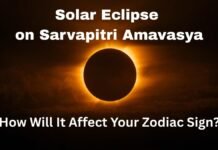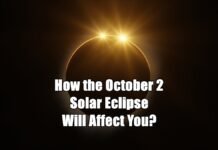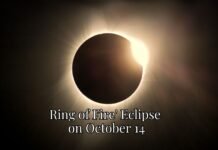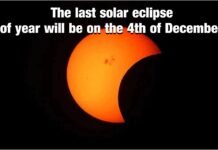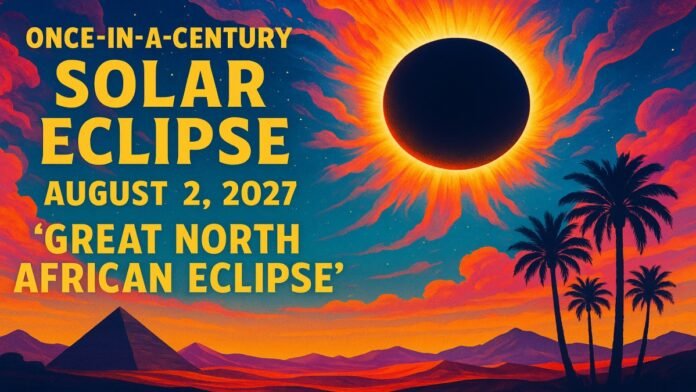
Key Points
- A total solar eclipse will occur on 2 August 2027, plunging parts of Africa and the Middle East into daytime darkness.
- This event, dubbed “The Great North African Eclipse”, will last up to 6 minutes exceptionally long for a total solar eclipse.
- The eclipse will be visible to billions across regions including Southern Spain, North Africa, the Middle East, and parts of the Arabian Peninsula.
- Next total solar eclipse of this magnitude and path will not occur until 2114, making it a once-in-a-century spectacle.
- Special astronomical conditions Earth at aphelion, Moon at perigee, and alignment over the equator—will create this unusually long eclipse.
New Delhi: Astronomy enthusiasts and skywatchers, mark your calendars for August 2, 2027! On this historic day, the world will witness one of the most spectacular astronomical events of the 21st century: a rare total solar eclipse set to last an extraordinary 6 minutes. Experts say such a long and widely visible total eclipse will not occur again for almost a hundred years, with the next similar event expected in 2114.
Where Will the 2027 Total Solar Eclipse Be Visible?
The dramatic eclipse, already being called the “Great North African Eclipse,” will begin over the Atlantic Ocean and trace a path across multiple continents. Its journey will pass through:
- The Strait of Gibraltar
- Southern Spain
- Northern Morocco
- Northern Algeria
- Northern Tunisia
- Northeastern Libya
- Egypt
- Sudan
- Southwestern Saudi Arabia
- Yemen
- Somalia
- Multiple countries of the Arabian Peninsula
The eclipse will then lose intensity as it moves over the Indian Ocean. Crores (tens of millions) of people across several continents will have a chance to witness total darkness in the middle of the day.
Historical Context: How Rare Is This Eclipse?
Most total solar eclipses last less than 3 minutes, but the 2027 phenomenon will cover parts of the world in shadow for up to 6 minutes, making it one of the longest of the century. For comparison, the longest known total solar eclipse lasted 7 minutes and 28 seconds in 743 BC.
Additionally, after 2027, no such eclipse of this duration and visibility will occur until the year 2114.
Why Will This Eclipse Last So Long?
Astronomers point to a rare set of cosmic coincidences:
- Earth at Aphelion: On August 2, Earth will be at its farthest point from the Sun (aphelion), making the Sun appear slightly smaller from Earth’s perspective.
- Moon at Perigee: The Moon will be at or near its closest distance to Earth (perigee), appearing larger in the sky and able to completely cover the Sun.
- Perfect Equatorial Alignment: The Moon’s shadow will fall near the Earth’s equator and travel at a slower speed relative to the ground, extending the duration of totality.
Detailed Map: Total Solar Eclipse of August 2, 2027
The total solar eclipse on August 2, 2027, will trace a dramatic path across southern Spain, North Africa, the Middle East, and portions of the Arabian Peninsula. Below is a global overview map showing the path of totality where the sun will be completely covered by the moon for up to six minutes. Areas outside this central path will experience a partial eclipse.
Highlights of the Eclipse Path:
- Totality: Narrow corridor passing through southern Spain, Morocco, Algeria, Tunisia, Libya, Egypt (including Luxor), Sudan, Saudi Arabia, Yemen, and Somalia.
- Partial Eclipse Zone: Vast region including much of Africa, the Middle East, and southern Europe, where the sun will be only partially obscured.
For interactive and highly detailed maps showing exact timings, obscuration, and local conditions worldwide, specialized eclipse resources provide zoomable mapping for individualized viewing locations.
Visibility in India: August 2, 2027 Solar Eclipse
Will Totality Be Visible in India?
- No part of India lies within the path of totality for this eclipse. The complete blackout effect of totality will not be seen anywhere in India.
Partial Eclipse Details for India
- Most of India will experience a partial solar eclipse on the evening of August 2, 2027.
- The extent of the sun covered by the moon (obscuration) will be small, ranging from about 6% in eastern India to nearly 40% in the far southwest. Most major cities will see less than 25% coverage.
- The eclipse will occur near sunset, so viewing opportunities may be brief in many areas.
Table: Sample Eclipse Visibility in Select Indian Cities
| City | Maximum Obscuration | Start (IST) | Maximum (IST) | End (IST) |
|---|---|---|---|---|
| New Delhi | 8.2% | 3:53 pm | 4:29 pm | 5:03 pm |
| Mumbai | 32.3% | 3:47 pm | 4:41 pm | 5:31 pm |
| Bengaluru | 39.1% | 3:59 pm | 4:53 pm | 5:43 pm |
| Hyderabad | 26.9% | 3:58 pm | 4:47 pm | 5:33 pm |
| Kolkata | 6.1% | 4:14 pm | 4:44 pm | 5:12 pm |
| Ahmedabad | 23.9% | 3:44 pm | 4:35 pm | 5:22 pm |
| Chennai | 32.6% | 3:57 pm | 4:54 pm | 5:47 pm |
- Maximum partial eclipse: Occurs between 4:30 pm and 5:00 pm in most cities.
- Duration: The partial phase lasts around 2 hours but may be cut short by sunset depending on your location.
State-Wise Visibility
A partial eclipse will be visible from every state and union territory, with timings and coverage varying according to region.
Safety Note
It is crucial to use special solar viewing glasses or indirect viewing methods to watch the partial phases. Never look directly at the sun with the naked eye or through regular sunglasses during any phase of the eclipse.


































